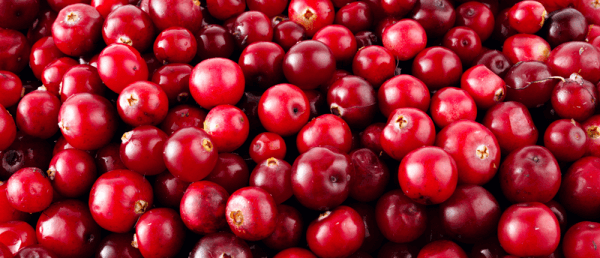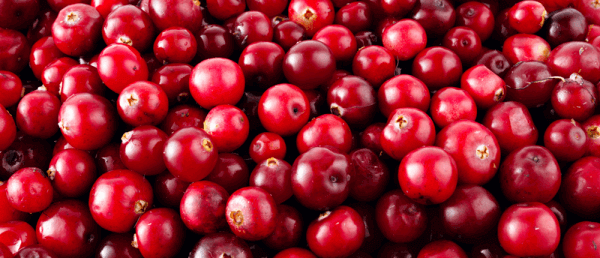
Now it is generally accepted that we are approaching crisis point as bacteria ‘ Escherichia coli especially ‘ become ever more anti-biotic resistant, and new effective antibiotics are alarmingly difficult (if not altogether impossible) to find or develop.
The World Health Organisation repeatedly and increasingly warns that most countries are not doing enough to protect the antibiotics we do have, and the Chief Medical Officer for England Professor Dame Sally Davies describes a ‘ticking time bomb’ in which common infections could potentially re-emerge as killers if the antimicrobial arsenal is not strengthened soon.
To help curb antibiotic overuse in primary care, specific government recommendations for limiting prescriptions in coughs and colds, sore throats, mid’dle ear infections and urinary tract infections (UTIs) are in place, yet research has found the national guidelines in UK primary care has had ‘mixed suc’cess1’, with results suggesting ‘there is significant scope to improve prescribing, particularly for coughs/ colds and for UTIs1’. All is not entirely lost, however, as the failure rates of individual antibiotics vary within the infection classes. One of the most frequently prescribed antimicrobi’als for urine infections ‘ trimethoprim ‘ is cited as having failed 25% of the time in 1991, spiralling to 56% in 20122, but this was when it was prescribed for an upper respiratory tract infection. Amoxicillin, on the other hand, remains highly prescribed for the same condition, yet had a relatively low failure rate of 12.2% in 20122.
Essex-based NHS GP Dr Rory McCrea is keenly aware of the problem, and is concerned that the scale of antimicrobial resistance is not being fully grasped in primary care, which is where the challeng’es begin. Treatment of UTIs provides a fine example, he suggests. After respiratory tract infections, they are the most common infectious diseases seen by GPs and in hospitals. ‘Anything that can be done to reduce UTIs is good,’ he says, ‘particularly in older people, where UTI is all too often associated with im’paired cognitive function. When I see patients show’ing signs of delirium and or confusion is reigning, I wonder what the urine’s doing. Typically a UTI is all-too-often an underlying problem to the point that once the UTI is controlled the cognitive function is restored, but never to quite the same level as before. Clearly the more often the individual experiences a UTI, the more marked the cognitive deterioration will progressively become.’
Prophylaxis to prevent recurrent UTI is not ideal with antibiotics because people are likely to end up resistant to treatment, especially if they have been prescribed trimethoprim. ‘Typically a patient begins with a UTI and the more entrenched the infection becomes, the more difficult it becomes to treat,’ explains Dr McCrea. Eventually patients may be admitted to hospital and required to take antibiotics intravenously.
‘If hospitals are going to reduce their admissions of elderly people suffering from UTI, nursing and residential homes need to be considering ways to reduce the incidence of UTI in the first place,’ he says, ‘Non-antibiotic prophylaxis has got to help, if it’s available.’
Could it be that a cheery berry holds the answer? Certainly a growing contingent of scientists and urolo’gists think so. While it’s not new news that cranberry juice and cranberry extracts appear to help in the relief and prevention of recurrent UTI, the discovery that using Vaccinium macrocarpon Aiton is unlikely to trigger bacterial resistance is making ripples in the urology community.
The key to cranberry’s potential lies in its mode of action. ‘The accumulation, growth and biofilm-like attachment of uropathogenic P-fimbriated E. coli in the lower urinary tract is the first step in the genesis of a urinary tract infection3,’ writes Gunter Haesaerts, president of French supplement manufacturer Phar’matoka, whose Urell cranberry capsules and syrup have been the subject of a number of promising in vitro and in vivo studies. Juice and powdered extracts containing active constituents Proanthocyanidins (PACs) from the American cranberry have been found to inhibit the adherence of P-fimbriated E. coli to uropepithelial cells, effectively preventing the bacteria from growing and causing infection as they are flushed out in the urine stream.
As the bacteria are not killed by the mechanism of cranberry PACs upon them, they do not mutate to develop resistance. And because a population of resistant bacteria has not had the chance to build, the bacteria should remain sensitive to antibiotic treatment in the event that an infection is not entirely eliminated by the cranberry initially.
Moreover, it is thought that uropathogenic E. coli propel themselves upwards in the urinary tract by using their flagella (or ‘legs’). The authors of a study investigating the mode of action of cranberry on E. coli strain CFT073 successfully demonstrated that cranberry PACs can disable the bacteria to pre’vent them swarming or swimming. They and other researchers suggest that applying cranberry extracts to catheters, for example, could be useful in slowing the movement of bacterial pathogens as they bid to reach the kidneys.
But what of cranberry’s role in the prevention of sim’ple urinary tract infections like cystitis? The Cochrane Review by Jepson et al in 2012 indicated that both cranberry and low-dose antibiotic prophylaxes were more-or-less as effective, while a randomised control in 137 older women by McMurdo and others4 concluded that ‘Trimethoprim had a very limited advantage over cranberry extract in the prevention of recurrent UTIs in older women and had more adverse effects.’
The elderly are of course not the only group at risk of UTI. It is estimated that more than 50% of wom’en will experience a UTI in their lifetime, of which as many as 30% will suffer two or more recurrences. Children, pregnant women, catheterized patients, and those with spinal cord injuries, or chronic and/ or diseases that compromise immunity are all pop’ulations susceptible to urinary tract infections. In none of these cases is over-prescription of antibi’otics desirable as microbial resistance will almost certainly develop ‘ and this may be irreversible.
In the community setting, further advantages of cranberry extracts include next to no drug interac’tion and the fact that they can be readily and safely taken alongside prescribed medication – including antibiotics. Haesaerts is keen to stress that cranberry products should never be seen as an alternative to antimicrobial medication, however, as they could not, he says ‘be considered to cure UTIs, which actually means replace antibiotics.’ He believes that such suggestions are ‘dangerous and false’.
Dr McCrea agrees: ‘Cranberry is never going to be the whole story in the fight against antibiotic resist’ance ‘ but anything ‘ even a 10% reduction – in preventing the infections in the first place has got to be beneficial.’
The cranberry product to be used should be chosen with care. Under current legislation in most of the world, all cranberry products ‘ including juices, cor’dials, supplements, and dried extracts ‘ are classified as food or dietary supplements, and are therefore gov’erned under food laws. Unlike in herbal medicine, there is no requirement for the products to be standardised and claims for their benefits can vary wildly from coun’try to country: in Europe, EFSA has not approved any claims for the fruit whatsoever. Inevitably as cranberry’s potential as a non-antibiotic prophylaxis for recurrent UTI has led to competition and debate over which is the most powerful extract, and how this potency is measured. Unfortunately for the purposes of mean’ingful scientific evaluation, this is largely unhelpful as direct comparisons are difficult to achieve. The general consensus in the scientific community is however that a cranberry product must provide at least 36mg PACs per dose, as measured by the BL-DMAC.
Nonetheless the important message is, as Dr Amy Howell, associate research scientist at the Marucci Center for Blueberry Cranberry Research at Rutgers University puts it, that cranberry could decrease the recurrence of UTIs and that ‘this nutritional approach could lower the use of low-dose antibiot’ics for prevention.’ Even more tantalising perhaps is the likelihood that cranberry, as well as reducing ‘the overall need for antibiotics for treatment’ could thereby reduce ‘the consequent development of resistance to these drugs.’ In effect, it may have the ability to make some antimicrobials almost irresistible to certain uropathogenic bacteria.
‘Cranberry is a truly complementary therapy,’ con’cludes Dr McCrea, ‘and one that could be of great interest in primary care.’
1Hawker JI, Smith S, Smith GE et al. Trends in antibiotic prescribing in primary care for clinical syndromes subject to national recommendations to reduce antibiotic resistance. UK 1995-2011. Journal of Antimicrobial Chemotherapy. Published online August 4 2014
2Currie CJ, Berni E, Jenkins-Jones S, et al. Antibiotic treatment failure in four com’mon infections in UK primary care 1991-2012: longitudinal analysis. BMJ. Published online September 23 2014
3Haesaerts G. Urell by Pharmatoka: The pioneer of bacterial anti-adhesion against uropathogenic p-fimbriated E. coli in the urinary tract. Bol. SPAO 2010; 4(2)
4McMurdo MET, Argo I, Phillips G, Daly F, Davey P Cranberry or trimethoprim for the prevention of recurrent urinary tract infections? A randomized controlled trial in older women Journal of Antimocrobial Chemotherapy, 2009. 63(2): p. 389-95



















